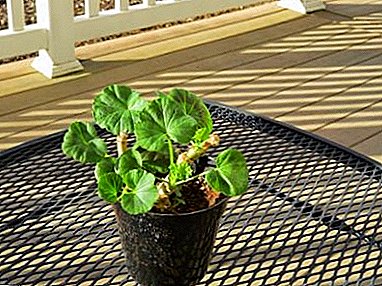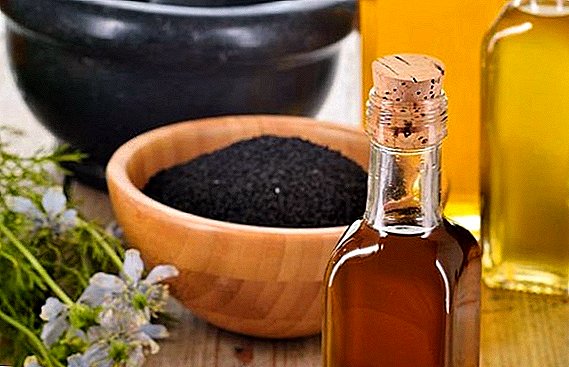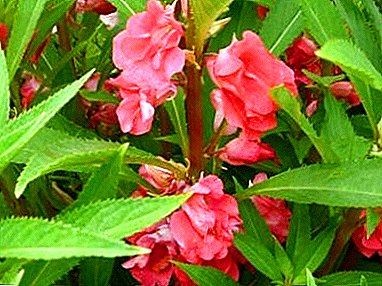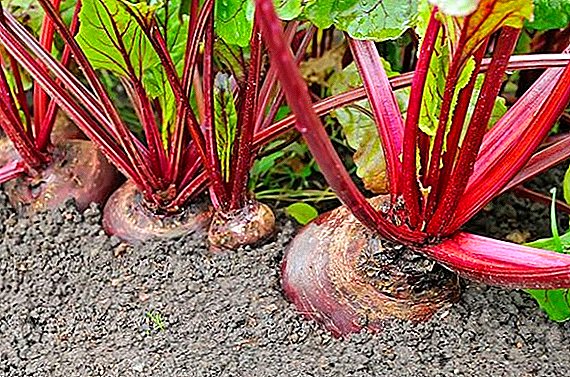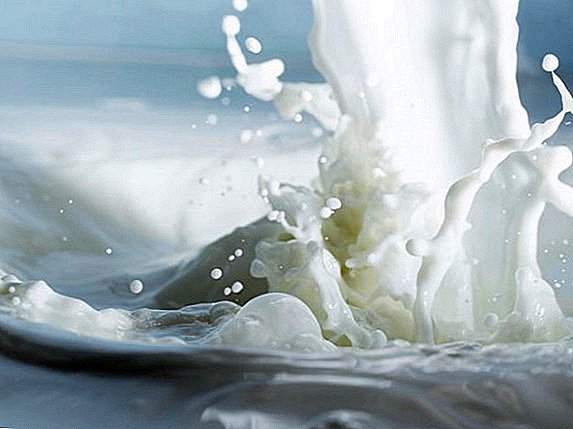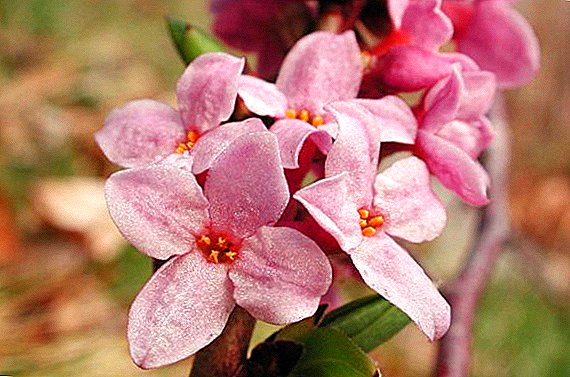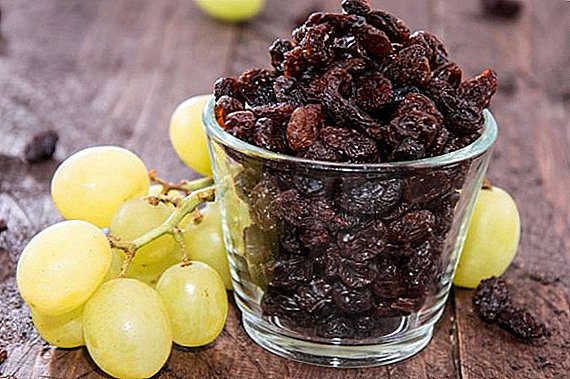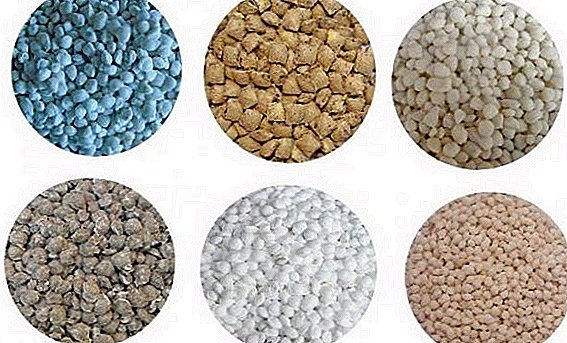 Nitrogen fertilizers are inorganic and organic substances that contain nitrogen and are applied to the soil to improve yields. Nitrogen is the main element of plant life, it affects the growth and metabolism of crops, saturates them with useful and nutritional components.
Nitrogen fertilizers are inorganic and organic substances that contain nitrogen and are applied to the soil to improve yields. Nitrogen is the main element of plant life, it affects the growth and metabolism of crops, saturates them with useful and nutritional components.
This is a very powerful substance that can both stabilize the phytosanitary condition of the soil, and provide the opposite effect - when it is oversupplied and misused. Nitrogen fertilizers differ in the amount of nitrogen contained in them and are classified into five groups. The classification of nitrogen fertilizers implies that nitrogen can take different chemical forms in different fertilizers.
The role of nitrogen for plant development
The main nitrogen reserves are contained in the soil (humus) and make up about 5%, depending on the specific conditions and climatic zones. The more humus in the soil, the richer and more nutritious it is. The most poor in nitrogen content are light sandy and sandy soils.
However, even if the soil is very fertile, only 1% of the total nitrogen contained in it will be available for plant nutrition, since the decomposition of humus with the release of mineral salts occurs very slowly. Therefore, nitrogen fertilizers play an important role in crop production, their importance cannot be underestimated, because to grow a large and high-quality crop without their use will be extremely problematic.

Nitrogen is an important component of the protein, which, in turn, is involved in the formation of the cytoplasm and the nucleus of plant cells, chlorophyll, most vitamins and enzymes that play an important role in the processes of growth and development. Thus, a balanced nitrogen diet increases the percentage of protein and the content of valuable nutrients in plants, increasing the yield and improving its quality. Nitrogen as a fertilizer used for:
- accelerating plant growth;
- plant saturation with amino acids;
- increasing the volume of plant cells, reducing the cuticle and shell;
- accelerating the mineralization process of nutritional components introduced into the soil;
- activation of soil microflora;
- extraction of harmful organisms;
- increase yields
How to determine nitrogen deficiency in plants
The amount of nitrogen fertilizer applied directly depends on the composition of the soil on which the plants are cultivated. Insufficient nitrogen content in the soil directly affects the viability of the crops grown. Lack of nitrogen in plants can be determined by their appearance: the leaves shrink, lose color or turn yellow, die off quickly, growth and development slows down, and young shoots stop growing.

Fruit trees in conditions of a lack of nitrogen poorly branched, fruits become shallow and crumble. In stone trees, nitrogen deficiency causes reddening of the bark. Also, too acidic soils and excessive sodding (planting of perennial grasses) of the area under fruit trees can provoke nitrogen starvation.
Signs of excess nitrogen
Excess nitrogen, as well as deficiency, can cause significant damage to plants. When there is an excess of nitrogen, the leaves become dark green in color, grow unnaturally large, become juicy. At the same time, the flowering and ripening of fruits in fruit-bearing plants is delayed. A surplus of nitrogen for succulent plants such as aloe, cactus, etc., ends in death or ugly scars, since thinned skin can burst. 
Types of nitrogen fertilizers and methods of their use
Nitrogen fertilizers are obtained from synthetic ammonia and, depending on the state of aggregation, are divided into five groups:
- Nitrate: calcium and sodium nitrate;
- Ammonium: ammonium chloride and ammonium sulfate.
- Ammonium nitrate or ammonium nitrate - a complex group that combines ammonium and nitrate fertilizers, for example, as ammonium nitrate;
- Amide: urea
- Liquid ammonia fertilizers, such as anhydrous ammonia and ammonia water.
No less important fertilizers are potash: potassium salt, potassium humate and phosphate: superphosphate.
Ammonium nitrate
Ammonium nitrate - effective fertilizer in the form of white transparent granules, containing about 35% nitrogen. It is used as the main application and for dressings. Ammonium nitrate is especially effective in poorly moistened areas where there is a high concentration of soil solution. On overmoistened soils, the fertilizer is ineffective because it is quickly washed away by groundwater along with precipitation.

The effect of ammonium nitrate on plants is to strengthen the stem and the growth of hardwood, and also leads to an increase in soil acidity. Therefore, when using it, it is recommended to add a neutralizer (chalk, lime, dolomite) to the ammonium nitrate at the rate of 0.7 kg per 1 kg of nitrate. Today, in the mass sale is not found pure ammonium nitrate, and ready-made mixtures are sold.
A good option would be a mixture of ammonium nitrate 60% and neutralizing substance 40%, which will yield about 20% nitrogen. Ammonium nitrate is used during the digging of the garden in preparation for planting. It can also be used as a fertilizer when planting seedlings.
Ammonium sulfate
Ammonium sulfate contains up to 20.5% nitrogen, which is well accessible to plants and is fixed in the soil due to the cationic nitrogen content. This allows the use of fertilizer in the fall, without fear of possible significant loss of mineral matter due to leaching into the groundwater. Ammonium sulphate is also suitable as the main application for fertilizing.

On the soil has an acidifying effect, therefore, as in the case of nitrate, to 1 kg of ammonium sulphate you need to add 1.15 kg of a neutralizing substance (chalk, lime, dolomite, etc.). According to research results, fertilizer gives an excellent effect when using it to feed potatoes. Ammonium sulphate is not demanding of storage conditions, since it is not moistened as ammonium nitrate.
Important! Ammonium sulfate should not be mixed with alkaline fertilizers: ash, tomasshlak, slaked lime. This leads to nitrogen losses.
Potassium nitrate
Potassium nitrate, or potassium nitrate, is a mineral fertilizer in the form of white powder or crystals, which is applied as an additional food for crops that do not tolerate chlorine. The composition consists of two main components: potassium (44%) and nitrogen (13%). This ratio with the prevalence of potassium can be used even after flowering and the formation of ovaries.

This composition works very well: thanks to nitrogen, the growth of crops is accelerated, while potassium increases the strength of the roots so that they absorb nutrients from the soil more actively. Due to the biochemical reactions in which potassium nitrate acts as a catalyst, respiration of plant cells is improved. This activates the immune system of plants, reducing the risk of many diseases.
This effect has a positive effect on increasing yields. Potassium nitrate has a high hygroscopicity, that is, it is easily dissolved in water to prepare solutions for feeding plants. Fertilizer is suitable for both root and foliar fertilizing, in dry and liquid form. The solution acts much faster, so it is more often used for applying dressings.
In agriculture, potassium nitrate is mainly fed raspberries, blueberries, strawberries, beets, carrots, tomatoes, tobacco and grapes. But potatoes, for example, love phosphorus, so this fertilizer will be ineffective for him. It makes no sense to add potassium nitrate and under the greens, cabbage and radish, since such use of fertilizer will be irrational.

The effect of nitrogen fertilizers in the form of potassium nitrate on plants is to improve the quality and increase the amount of the crop. After fertilization, the pulp of fruits and berries is fully saturated with fruit sugars, and the size of the fruits themselves increase. If you make dressing at the stage of laying the ovaries, then the fruit will subsequently increase the shelf life of the fruit, they will longer retain their original appearance, health and taste.
Calcium Nitrate
Calcium nitrate, calcium nitrate or calcium nitrate is a fertilizer that comes in the form of granules or crystalline salt and is highly soluble in water. In spite of the fact that it is a nitrate fertilizer, it does not harm human health if the dosages and recommendations for use are observed, and it brings great benefits to agricultural and horticultural crops.
In the composition - 19% calcium and 13% nitrogen. Calcium nitrate is good because it does not increase the acidity of the earth, unlike most other types of fertilizers containing nitrogen. This feature allows the use of calcium nitrate on different types of soil. Especially effective fertilizer works on sod-podzolic soils.

It is calcium that promotes the full absorption of nitrogen, which ensures good growth and development of crops. With a lack of calcium, the root system of the plant, which lacks nutrition, suffers in the first place. The roots stop getting moisture and rot. It is better to choose granulated of the two existing aggregate forms of calcium nitrate, it is easier to handle, does not spray during use and does not absorb moisture from the air.
Main Benefits of calcium nitrate:
- high-quality formation of green mass of plants due to cell strengthening;
- the acceleration of seed germination and tubers;
- rehabilitation and strengthening of the root system;
- increased resistance to disease, bacteria and fungi;
- increasing the winter hardiness of plants;
- improvement of taste and quantitative indicators of the harvest.
Did you know? Nitrogen helps well in the fight against insect pests of fruit trees, for which urea is often used as an insecticide. Before the buds bloom, the crown should be sprayed with a solution of urea (50-70 g per 1 l of water). This will save plants from pests hibernating in the bark or in the soil around the tree circle. Do not exceed the urea dosage, otherwise it will burn the leaves.
Sodium Nitrate
Sodium nitrate, sodium nitrate or sodium nitrate is used not only in crop production and agriculture, but also in industry. These are solid crystals of white color, often with a yellowish or grayish tint, well soluble in water. The nitrogen content in the nitrate form is about 16%.
Sodium nitrate is obtained from natural deposits using a crystallization process or from synthetic ammonia, which contains nitrogen. Sodium nitrate is actively used on all types of soil, especially for potatoes, sugar and table beets, vegetables, fruit and berry and flower crops when applied early in the spring.

Most effectively acts on acidic soils, since it is an alkaline fertilizer, it alkalizes the soil a little. Sodium nitrate has proven itself as a top dressing and use when sowing. Fertilizer is not recommended to be applied in autumn, as there is a risk of nitrogen leaching into groundwater.
Important! It is forbidden to mix sodium nitrate and superphosphate. It is also impossible to use it on saline soils, since they are already oversaturated with sodium.
Urea
Urea, or carbamide - crystalline granules with a high nitrogen content (up to 46%). The plus is that the nitrogen in the urea easily soluble in water while the nutrients do not go to the bottom layer of soil. Urea is recommended to be used as foliar feeding, because it gently acts and does not burn the leaves, while respecting the dosage.
Thus, urea can be used during the growing season of plants, it is suitable for all types and time of application. Fertilizer is used before sowing, as the main dressing, by means of deepening the crystals in the ground so that ammonia does not evaporate outdoors. During sowing, it is recommended to apply urea together with potash fertilizers, this helps to eliminate the negative effect that urea can have due to the presence of a harmful substance biuret in its composition.

A foliar dressing is carried out using a spray gun in the morning or in the evening. A solution of urea (5%) does not burn leaves, in contrast to ammonium nitrate. Fertilizer is used on all types of soil for feeding flowering crops, fruit and berry plants, vegetables and root crops. Urea is introduced into the ground two weeks before sowing so that the biuret has time to dissolve, otherwise the plants may die.
Important! Do not allow liquid nitrogen-containing fertilizers on the leaves of plants. This causes their burns.
Liquid Nitrogen Fertilizers
Liquid fertilizers have gained wide popularity due to the affordable price: the product turns out to be 30-40% cheaper than its solid counterparts. Consider the basic liquid nitrogen fertilizers:
- Liquid ammonia is the most concentrated nitrogen fertilizer containing up to 82% nitrogen. It is a colorless mobile (volatile) liquid with a specific sharp smell of ammonia. For carrying out dressing with liquid ammonia, use special closed machines, laying the fertilizer to a depth of at least 15-18 cm so that it does not evaporate. Store in special thick-walled tanks.
- Ammonia water, or aqueous ammonia - produced two types with different percentage of nitrogen 20% and 16%. As well as liquid ammonia, ammonia water is introduced by special machines and stored in closed tanks designed for high pressure. In terms of efficiency, these two fertilizers are equal to solid crystalline nitrogen-containing fertilizers.
- Ammonia is obtained by dissolving combinations of nitrogen fertilizers in aqueous ammonia: ammonium and calcium nitrate, ammonium nitrate, urea, etc. The result is a yellow liquid fertilizer, which contains from 30 to 50% nitrogen. By their effect on crops, ammoniacs are equated to solid nitrogen fertilizers, but not so common due to inconvenience in use. Ammonacs are transported and stored in sealed aluminum tanks designed for low pressure.
- Urea-ammonia mixture (CAM) is a very effective liquid nitrogen fertilizer that is actively used in crop production. CAS solutions have undeniable advantages over other nitrogenous fertilizers. The main advantage is the low content of free ammonia, which almost eliminates the loss of nitrogen due to the volatility of ammonia during transportation and the introduction of nitrogen into the soil, which is observed when using liquid ammonia and ammonia. Thus, there is no need to create complex sealed storage facilities and tanks for transportation.

All liquid fertilizers have their advantages over solid ones - better digestibility of plants, longer duration of action and the ability to evenly distribute the top dressing.
As organic fertilizers you can use sideratis, charcoal, ash, sawdust, manure: cow, sheep, rabbit, pork, horse.
Organic Nitrogen Fertilizers
Nitrogen is found in small quantities in almost all types of organic fertilizers. About 0.5-1% nitrogen contains manure; 1-1.25% - bird droppings (its highest content is in chicken, duck and pigeon droppings, but they are also more toxic).
Organic nitrogen fertilizers can be prepared independently: peat-based compost heaps contain up to 1.5% nitrogen; in the compost from domestic waste about 1.5% of nitrogen. The green mass (clover, lupine, sweet clover) contain about 0.4-0.7% of nitrogen; green foliage - 1-1.2% nitrogen; lake silt - from 1.7 to 2.5%.

It is worth remembering that the use of organics alone as a source of nitrogen is inefficient. This can worsen the quality of the soil, acidify it and not provide the necessary nitrogen nutrition to crops. It is best to give preference to the use of a complex of mineral and organic nitrogen fertilizers to achieve the maximum effect for plants.
Precautionary measures
When working with nitrogen fertilizers, be sure to adhere to the instructions for use, follow the recommendations and do not violate the dosage. The second important point is the presence of closed, tight clothing so that the drugs do not get on the skin and mucous membrane.
 Liquid nitrogenous fertilizers are especially toxic: ammonia and ammonia water. Be sure to strictly adhere to safety regulations when working with them. Резервуар для хранения аммиачной воды должен быть заполнен не более чем на 93 % во избежание разлива от нагрева. К работе с жидким аммиаком допускаются только лица в специальной защитной одежде, прошедшие медицинский осмотр, обучение и инструктаж.
Liquid nitrogenous fertilizers are especially toxic: ammonia and ammonia water. Be sure to strictly adhere to safety regulations when working with them. Резервуар для хранения аммиачной воды должен быть заполнен не более чем на 93 % во избежание разлива от нагрева. К работе с жидким аммиаком допускаются только лица в специальной защитной одежде, прошедшие медицинский осмотр, обучение и инструктаж.
It is prohibited to store ammonia fertilizers and to carry out any work with them near open fire (closer than 10 m). Fine-crystalline ammonium nitrate quickly compressed, so it can not be stored in a damp room. Large crystals must be crushed before feeding, to avoid increased concentration of fertilizer in one place.
Sodium nitrate should be packaged in five-layer paper bags enclosed in plastic liner bags. Transport bags in covered wagons, closed ships and covered road transport. You can not jointly transport sodium nitrate with flammable materials and food.


